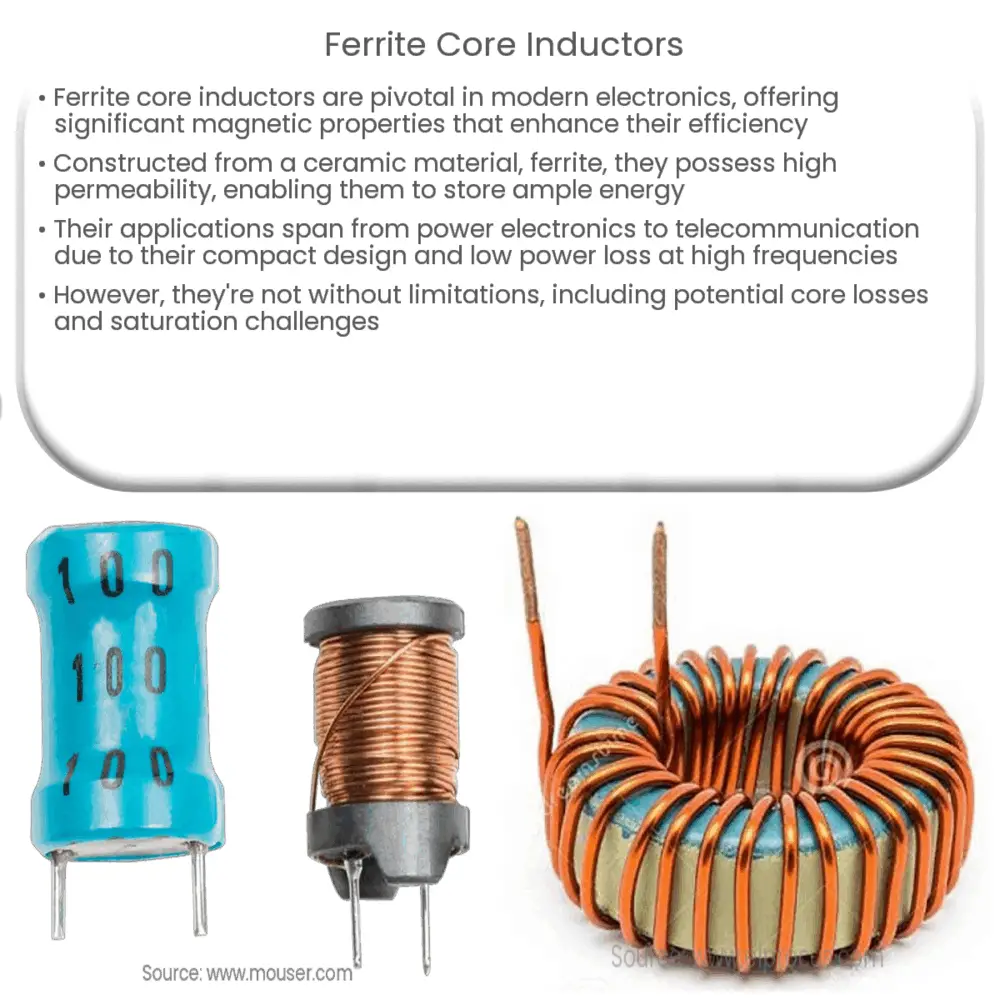Explore the world of ferrite core inductors, their types, advantages, applications, and challenges in modern electronics.

Ferrite Core Inductors: An Insight into a Vital Component
Inductors are essential components of electronics, playing a vital role in various systems, including radios, television sets, mobile devices, and many others. An integral type of inductor is the Ferrite Core Inductor. These inductors have a core made from ferrite, a type of ceramic material known for its excellent magnetic properties. Ferrite cores have a high permeability, which allows them to store a substantial amount of energy in their magnetic fields.
The Essence of Ferrite Core Inductors
A ferrite core inductor is primarily composed of two main components: the ferrite core and the winding. The ferrite core is manufactured from a ferromagnetic material, which enhances the magnetic field and thus the inductance of the coil. This quality is a significant advantage when creating compact, high-efficiency inductors. The windings, typically made of copper, are wrapped around the ferrite core, and it is here where the magnetic field is generated when an electric current passes through.
Categories of Ferrite Core Inductors
Ferrite Materials and Their Types
Ferrite materials used in the construction of ferrite core inductors can be broadly categorized into two types: soft ferrites and hard ferrites. Soft ferrites are most commonly used in inductor cores due to their high magnetic permeability and low coercivity. These properties allow them to easily magnetize and demagnetize, which is crucial for the functioning of the inductor.
On the other hand, hard ferrites, also known as permanent magnet ferrites, have a high coercivity, meaning they can maintain their magnetization even in the absence of an applied magnetic field. They are less commonly used in inductors and are more often seen in permanent magnet applications.
Advantages of Ferrite Core Inductors
The ferrite core inductor presents many advantages. Its high magnetic permeability allows the inductor to store a large amount of energy in a small space, leading to compact and efficient design possibilities. Ferrite cores also exhibit low power loss, which is especially advantageous for applications operating at high frequencies. This characteristic makes ferrite core inductors a preferred choice for various high-frequency applications.
Applications of Ferrite Core Inductors
Ferrite core inductors have a wide range of applications in many different fields. Due to their high magnetic permeability and low power loss at high frequencies, they are extensively used in power supplies and electronic devices. Here are some primary applications:
Selection of Ferrite Core Inductors
Choosing the right ferrite core inductor depends on several factors, including the operating frequency, power requirements, and specific application. Other considerations include the inductor’s physical size, weight, and cost. When selecting a ferrite core inductor, one should take into account the core material’s properties, including its permeability, saturation point, and loss characteristics.
Challenges and Limitations
Despite the many advantages, ferrite core inductors have certain limitations. They can experience core losses, particularly at high frequencies. Furthermore, they can saturate if the current exceeds the limit that the core can handle, which can lead to decreased performance and possible damage. Overheating is another issue that may arise due to hysteresis and eddy current losses.
Conclusion
In conclusion, ferrite core inductors are a cornerstone in modern electronics, showcasing superior magnetic properties that make them suitable for a wide variety of applications. Their high magnetic permeability, coupled with low power loss at high frequencies, make them an excellent choice for many applications, ranging from power electronics to telecommunication devices. However, like all electronic components, they have limitations and challenges, which must be taken into account during the design and selection process. By understanding these factors, engineers can leverage the full potential of ferrite core inductors in their electronic designs.


